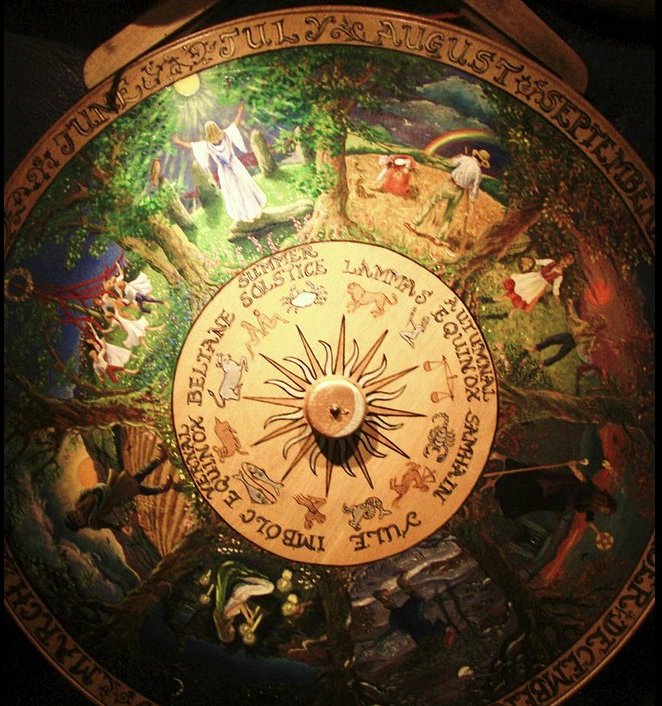|
In the Golden Age of the Bull the season of high
summer could have been regarded to begin at
Beltane, in the center between spring equinox
and the summer solstice:
But Hb3-16 (116) is not around *45 right ascension days earlier than Hb3-41 (141). Instead there seems to have been a shift, a locomotion, in the astronomical perspective ultimately due to the precession. ... Midsummer is the flowering season of the oak, which is the tree of endurance and triumph, and like the ash is said to 'court the lightning flash'. Its roots are believed to extend as deep underground as its branches rise in the air - Virgil mentions this - which makes it emblematic of a god whose law runs both in Heaven and in the Underworld ... The month, which takes its name from Juppiter the oak-god, begins on June 10th and ends of July 7th. Midway comes St. John's Day, June 24th, the day on which the oak-king was sacrificially burned alive. The Celtic year was divided into two halves with the second half beginning in July, apparently after a seven-day wake, or funeral feast, in the oak-king's honour ... My derived date "April 29 (118 + 1) suggests influence from the Moon, because 118 = 4 * 29½ = 354 / 3. Counting according to the Sun calendar we need 118 + 3 in order to reach day 121 (= 11 * 11).
In which case the distance to "May 24 (144) would then not be *25 days but *23 days (= *64 - *41). South of the equator, on Easter Island, the Moon instead of the Sun ought to determine time. Like in ancient Egypt the direction 'up' was not in the north but in the south. If we now are moving on to the interpretation of Hb4-16 (163) we should once again begin with the G text:
In the same way as it was necessary to add 16 to day 80 (Gregorian 0h) in order to reach 96 (APRIL 6) we should presumably add 16 also to Ga3-4 (63) and reach glyph number 63 + 16 = 79. ... Ecclesiastically, the equinox is reckoned to be on 21 March (even though the equinox occurs, astronomically speaking, on 20 March in most years) ... Everyone on Easter Island would surely know that 78 (→ 288 - 210) was the place in the night sky to be counted to in order to find the location of Rigel (*78).
... In view of the almost universal prevalence of the Pleiades year throughout the Polynesian area it is surprising to find that in the South Island and certain parts of the North Island of New Zealand and in the neighboring Chatham Islands, the year began with the new Moon after the early morning rising, not of the Pleiades, but of the star Rigel in Orion ... And *22 + Ga3-4 + *16 = *39 = Elnath (*80) - Bharani (*41). Beauty needs Balance:
And when the Sun was at Bharani the Full Moon ought therefore to be half a year away at Zuben Elgenubi in the Libra constellation.
The 'walking sky' figure
in Ga3-20 (→
Dramasa, *320.0, the South Pole
star) seems to show the 'dawn
break' from the preceding season which
had begun at Bharani. *285 - *224 = *61.
.jpg) |
||||||||||||||||||||||||||||||||||||||||||||||||||||||||||||||||||||||||||||||||||






